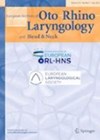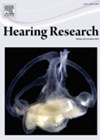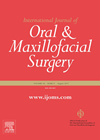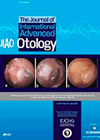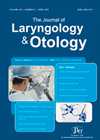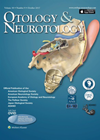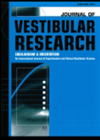
Journal Reviews archive for November 2022
Post-total laryngectomy constipation
This cross-sectional study investigated the prevalence of chronic constipation post total laryngectomy (TL) and after total pharyngolaryngectomy (TPL). For the study, the authors used a self-completed patient questionnaire to evaluate the prevalence and factors related to it. Patients using opioids,...
A twitch in time with a flicker of knowledge
The middle ear muscles can be seen as one of the ear’s safety mechanisms, and the interplay between eyes and ears has been established; think vestibular ocular reflex (VOR) or semi-circular canal dehiscence (SCCD). But can this protective mechanism be...
Electrocochleography and cochlear implants programming
Cochlear implants (CIs) often are the only option for people with severe to profound sensorineural hearing loss to be able to hear. Therefore, effective CI programming seems very important, especially in children who are still developing their speech. Using acoustic...
Wisdom teeth and mandibular osteotomies
This is a systemic review and meta-analysis from Italy and Brazil where they try to clarify the role of wisdom teeth and complications in a sagittal split mandibular osteotomy. Whilst, like many other papers, they outline the quality of evidence...
CT parameters in orbital wall fractures, choice of treatment, and patient outcome
This review from the Netherlands attempts to evaluate the relationship between CT parameters and the treatment that is used in clinical outcome (enophthalmos, diplopia and/or limitation in ocular movement). The authors look at fracture size, fracture location and involvement of...
Effects on the nasal cavity and maxillary sinus after a Le Fort I osteotomy
This paper from Turkey divided 28 patients into three groups: those having a maxillary advancement osteotomy, those with a maxillary advancement and impaction, and those that underwent advancement with a yaw rotation. They found that pure advancement movement of the...
Hearing rehabilitation for patients with chronic otitis media
Chronic otitis media (COM) commonly causes associated hearing loss. The authors performed a review of the literature, discussed challenges of restoring hearing in patients with COM and potential future work in reporting results both in terms of hearing outcomes and...
Correlation between middle ear and mastoid volumes with results of type 1 paediatric tympanoplasty
This is a retrospective study of 45 paediatric patients, aged between eight and 18 years, who underwent Type 1 cartilage graft tympanoplasty using conchal cartilage. Middle ear and mastoid volumes of these children were correlated with anatomical and functional outcomes...
Postoperative bleeding rates after inferior turbinate reduction using three different techniques
The most serious complication of inferior turbinate reduction surgery is postoperative bleeding, soon after the operation or later on. In this study comprising 751 patients, the authors have compared three common methods. Partial turbinectomy involved resection of the inferior turbinate,...
Pulsatile tinnitus, one more piece in the jigsaw
Pulsatile tinnitus (PT) is a common ENT symptom. It can generally be divided into venous and arterial. Arterial PT might be investigated with a CT scan while a venous one with an MRI or an MRV (MRI Venogram). Anecdotally, arachnoid...
Electrocochleography and speech-perception in cochlear implant (CI) patients
It is difficult to predict the speech perception outcomes of cochlear implantation. Previous studies showed that total response electrocochleography (ECochG-TR) may explain the variance in CI performance better than biographic, audiometric, and surgical factors combined. The authors’ objectives were to...
Vascular vertigo and dizziness: diagnostic criteria
This diagnostic criteria is one of the latest produced by The Bárány Society. It is a useful addition to previous ones for vestibular disorders. Vascular vertigo/dizziness by definition is caused by stroke, transient ischaemic attack (TIA), isolated labyrinthine infarction/haemorrhage and...

